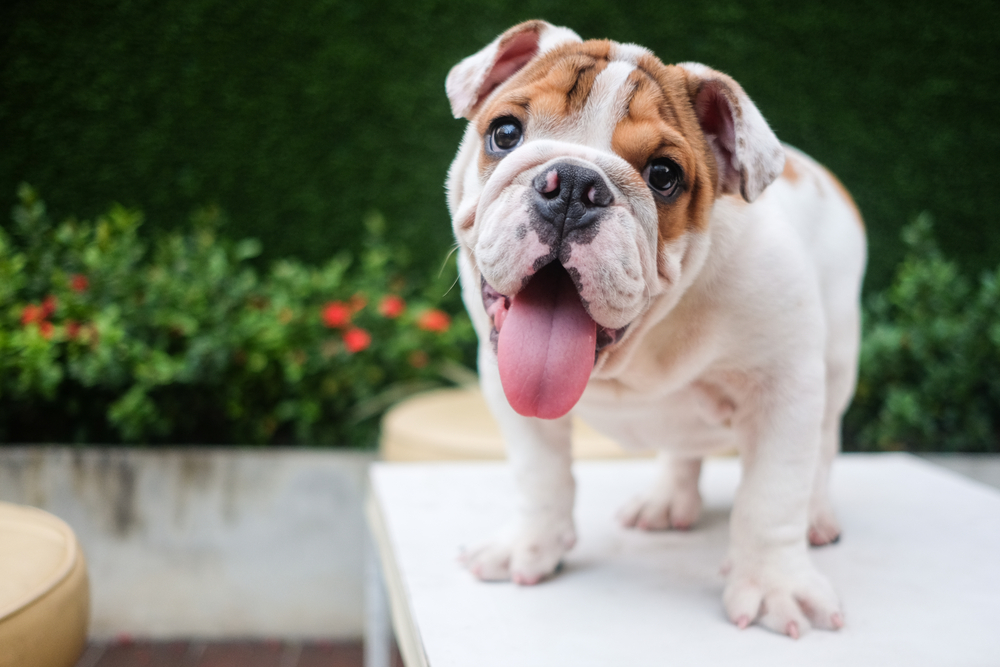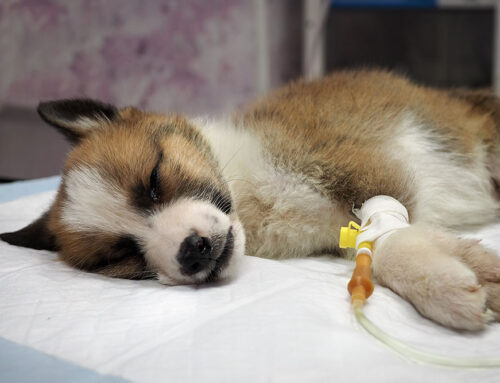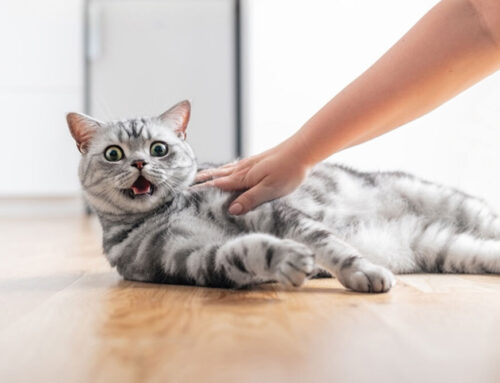Human dental care is a given, so why do so many people overlook problems brewing in a pet’s mouth? Whether you think your pet’s dental health isn’t important or you assume your cat won’t let you brush her teeth, read on as we clear up six common misconceptions about pet dental health.
Misconception #1: Dental health is not a big deal for pets
With aisles full of toothpastes and mouthwashes, people spend a lot of time and effort keeping their pearly whites in tip-top shape. But, when it comes to our pet’s oral health, we often fail to realize how important it is. If you don’t care for your pet’s mouth, periodontal disease is inevitable. Pets are masters at hiding disease and often won’t show signs that they are experiencing daily discomfort from painful teeth. In addition, bacteria harbored by plaque and tartar can enter the bloodstream and travel to the heart, kidneys, and other important organs.
Misconception #2: Cats won’t let you brush their teeth
Believe it or not, most animals can be taught to accept teeth brushing as part of their regular routine—even cats. Starting young helps, but it’s never too late to begin good habits. Start by putting pet-specific toothpaste on your finger and allowing your pet to lick it off. Once she gets used to that, begin to rub your fingers on her teeth as she licks the paste off. After a few days, switch to a pet toothbrush or finger brush and slowly brush the outer surface of her teeth, pausing to let her lick the toothpaste off as a treat. If your pet won’t allow you to brush the inner surfaces of her teeth, don’t worry—most tartar accumulates on the outer surface. Go slow and be patient, and reward your pet with praise and treats after each session—even if it didn’t go well—so she will develop a positive association with the routine.
Routine tooth brushing is the only reliable way to prevent plaque and tartar build-up. Aim to brush your pet’s teeth once a day.
Misconception #3: Animals are supposed to have “doggy breath”
If your pet has bad breath, periodontal disease has already set in. Periodontal disease is caused by oral bacteria that deposit sticky plaque onto the surface of the tooth and below the gum line. On the upper part of the tooth, this plaque mineralizes into the yellow or brown tartar buildup that is often seen. Below the gum line, the bacteria and plaque wreak havoc as they cause inflammation and break down the periodontal ligament that holds the tooth tightly in its socket. The bacteria, inflammation, and infection brewing in your pet’s mouth release bad odors, causing “doggy breath.”

Misconception #4: Animal don’t get cavities
Cavities are areas where tooth enamel becomes demineralized by acid, allowing bacteria and tooth decay to set in. The saliva of animals tends to be less acidic than humans, so it’s true that actual cavities do not occur often. Cats, however, commonly develop a similar affliction, called feline odontoclastic resorptive lesions (FORLs). Areas of demineralization similar to those seen in cavities occur on the tooth surface—usually where the crown meets the gum line—with eventual dental disease and tooth decay. We don’t know what causes these lesions to occur, but we do know that they are painful and are a common cause of discomfort in cats.
Misconception #5: A dental cleaning can be performed on an awake animal
Even if your pet is extremely cooperative and will allow a veterinarian to scrape tartar off of his teeth, removing tartar from the tooth surface is mostly cosmetic. It’s the plaque and tartar beneath the gums that cause periodontal disease, pain, and tooth loss. In order to reach subgingival plaque and perform a thorough dental cleaning, it is necessary to anesthetize your pet. Although this may sound scary, we take care of your pet with the safest drugs and monitoring procedures possible. While she is asleep, tartar is removed both above and below the gum line, and the teeth are polished to a shine. After a few hours of sleeping off the anesthesia, your pet is ready to go home with clean teeth and fresh breath.
Misconception #6: Chewing on bones is good for a dog’s teeth
Although chewing on hard bones might help dislodge tartar, the dangers of this practice far outweigh the benefits. Your dog can chip and fracture his teeth while chomping down on bones, antlers, and other hard items, leading to painful exposure of the nerve endings inside the tooth. Teeth that have been fractured need to be removed to keep your pet pain-free. Instead of bones, provide your pet with safe alternatives that can provide the same benefits. Find dental products approved by the Veterinary Oral Health Council (VOHC).
Questions about your pet’s dental health? Call us today!








Leave A Comment